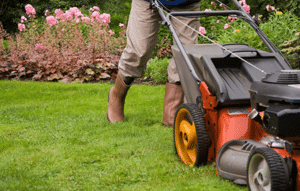Why Spring Aeration and Seeding Sucks – and Why You Should Never Do It!
Every spring, homeowners rush to aerate and seed their lawns, thinking it’s the best way to achieve lush, green grass. However, spring aeration and seeding may not be as effective as you think. In fact, these practices can create more problems than solutions, leaving you frustrated with a lawn that struggles to thrive.
If you’re considering spring aeration and seeding, here’s why you should think twice before doing it—and what to do instead.

1. Spring Aeration Can Do More Harm Than Good
Aerating your lawn in spring might seem like a good idea, but it often causes more damage than benefits. Here’s why:
Increased Weed Growth
Spring aeration creates holes in your lawn, which allows air, water, and nutrients to reach the roots. Unfortunately, it also creates the perfect environment for weeds like crabgrass and dandelions to take over. Since most weeds germinate in spring, aerating only makes it easier for them to spread.
Weak Root Development
While aeration is meant to help grass roots grow stronger, doing it in spring can actually weaken them. Newly aerated lawns focus energy on top growth instead of deep root establishment, making them less drought-resistant in the summer.
Timing Issues
Spring aeration often coincides with rainy weather, leading to excessive moisture. This can cause soil compaction rather than relieving it, leaving your lawn struggling to absorb nutrients properly.
2. Spring Seeding is a Waste of Time and Money
If you’re thinking about spring seeding, you might want to reconsider. While seeding in fall produces strong, healthy grass, spring seeding often leads to disappointing results. Here’s why:
Competes with Weeds
New grass seedlings need time to establish themselves before they can compete with weeds. Unfortunately, spring seeding means your new grass will be fighting against aggressive weeds that grow faster and choke out young seedlings.
Short Growing Window
Cool-season grasses thrive when planted in the fall because they have months to establish before the summer heat kicks in. Seeding in spring doesn’t allow enough time for strong root growth, making your lawn vulnerable to drought and stress during summer.
Pre-Emergent Herbicides Ruin Your Efforts
If you’re applying pre-emergent weed control in spring (which you should be), it will prevent spring seeding from working. Pre-emergents block seed germination, meaning your newly planted grass won’t grow properly.
3. The Better Alternative: Fall Aeration and Seeding
Now that you know why spring aeration and spring seeding aren’t ideal, what should you do instead? The best time for aeration and seeding is fall. Here’s why:
✅ Cooler Temperatures: Fall weather provides the perfect conditions for new grass to establish without stress from summer heat.
✅ Less Competition from Weeds: Most weeds die off in fall, allowing new grass to grow strong without interference.
✅ Stronger Root Growth: Grass planted in fall develops deeper roots, making it more resilient in the long run.
✅ Better Timing for Fertilization: Fall fertilization gives the grass the nutrients it needs to thrive in spring.
Final Thoughts: Skip Spring Aeration and Seeding for a Healthier Lawn
While it might be tempting to aerate and seed in spring, it’s not the best strategy for achieving a thick, healthy lawn. Instead, focus on weed control, proper mowing, and watering in spring—then plan for fall aeration and seeding when conditions are ideal.
Need expert advice on lawn care? Contact Blue Duck Lawn Care today for the best seasonal lawn care solutions!